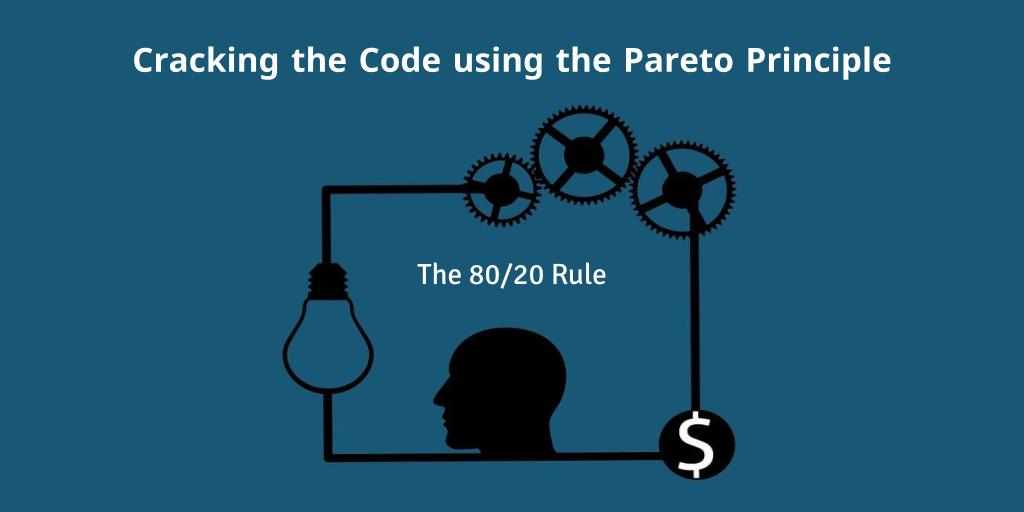The Pareto Principle, also known as the 80/20 Rule, is a concept that states roughly 80% of outcomes are generated by 20% of the inputs or causes. This principle, named after the Italian economist Vilfredo Pareto, has gained significant recognition across various fields due to its ability to provide insights into productivity, efficiency, and decision-making. In this article, we will explore the origins of the Pareto Principle, understand its core principles, examine its applications, address criticisms, and discuss methods for implementation.
Introduction
The Pareto Principle, commonly referred to as the 80/20 Rule, suggests that a small proportion of efforts or factors lead to a disproportionately large impact or results. This principle is based on the observation that in many situations, a minority of causes are responsible for the majority of outcomes. By understanding this principle, individuals and organizations can strategically allocate resources, identify critical areas for improvement, and optimize productivity.
Origins of the Pareto Principle
Vilfredo Pareto and the Principle’s Development:
The Pareto Principle was named after Vilfredo Pareto, an Italian economist who observed a consistent imbalance between inputs and outputs in society. In the late 19th century, Pareto noticed that approximately 80% of the land in Italy was owned by 20% of the population. Intrigued by this pattern, he further explored its applicability to other domains and found similar distributions in wealth, income, and various economic phenomena.
Understanding the Pareto Principle
The 80/20 Rule Explained:
The core idea behind the Pareto Principle is that a small fraction of causes generate a large proportion of effects. In the context of the 80/20 Rule, this translates to approximately 80% of the outcomes being driven by 20% of the inputs or efforts. For example, in a business setting, around 80% of the company’s revenue may come from just 20% of its customers or products. Understanding this principle helps in identifying the most influential factors and prioritizing resources accordingly.
Examples of the Pareto Principle in Different Areas:
The Pareto Principle manifests itself in various aspects of life. In personal finance, a significant portion of wealth accumulation often comes from a small number of investments or income streams. In time management, the principle suggests that a small number of tasks contribute the most value, allowing individuals to focus on what matters most. The principle also applies in quality control, where a minority of defects or issues can account for the majority of problems in a product or service.
Applying the Pareto Principle
Identifying the Vital Few and Trivial Many:
One of the key applications of the Pareto Principle is distinguishing between the vital few and the trivial many. By identifying the factors that contribute the most to the desired outcomes, individuals and businesses can concentrate their efforts on those areas. This selective focus maximizes efficiency and helps allocate resources optimally.
Enhancing Productivity with the 80/20 Rule:
By understanding the Pareto Principle, individuals can streamline their productivity. By identifying the 20% of tasks or activities that generate 80% of the desired results, time and energy can be allocated more effectively. Prioritizing the most impactful activities and delegating or eliminating less significant ones can lead to substantial productivity improvements.
Prioritizing Tasks and Decision-Making:
In decision-making, the Pareto Principle aids in prioritization. By focusing on the vital few factors that drive the majority of outcomes, individuals can make more informed choices. Applying the 80/20 Rule allows for better resource allocation, risk management, and goal alignment.
Pareto Principle in Business and Marketing:
Businesses can leverage the Pareto Principle to enhance their strategies. By identifying the key customers, products, or marketing channels that generate the majority of revenue, businesses can allocate resources more efficiently. This principle also helps in identifying bottlenecks, inefficiencies, and areas for improvement.
Criticisms and Limitations
While the Pareto Principle provides valuable insights, it is not without its criticisms and limitations. One common criticism is that the 80/20 split may not always be exact, and the proportion can vary in different contexts. Additionally, the principle’s application relies on accurate data collection, analysis, and interpretation, which can be challenging to achieve in practice.
Overcoming Challenges in Implementing the Pareto Principle
Data Collection and Analysis:
To effectively implement the Pareto Principle, proper data collection and analysis are crucial. Accurate information about inputs, outputs, and their relationships enables more precise identification of the vital few and trivial many. Robust data management systems and analytical tools are essential in this process.
Flexibility and Adaptability:
The Pareto Principle should be applied flexibly, recognizing that the distribution of inputs and outcomes may evolve over time. Continuous monitoring and reassessment of factors driving the desired outcomes help ensure the principle remains relevant and effective in different scenarios.
Conclusion
The Pareto Principle, or the 80/20 Rule, provides a valuable framework for understanding the imbalance between inputs and outcomes in various domains. By recognizing the vital few factors that drive the majority of results, individuals and businesses can prioritize their efforts, improve productivity, and make informed decisions. While it has its limitations and challenges in implementation, the Pareto Principle remains a powerful tool for optimizing resource allocation and maximizing efficiency.
FAQs
1. How can I apply the Pareto Principle in my personal life?
Applying the Pareto Principle in your personal life involves identifying the activities, tasks, or relationships that contribute the most to your desired outcomes. By focusing your time and energy on these vital few factors, you can enhance productivity and achieve better results.
2. Is the 80/20 rule universally applicable?
While the specific 80/20 split may not always hold true, the underlying principle of imbalance between inputs and outcomes is widely applicable in various contexts. The exact proportions may vary, but the concept of identifying the vital few and trivial many remains relevant.
3. What are some common misconceptions about the Pareto Principle?
One common misconception is that the Pareto Principle suggests disregarding the trivial many completely. However, it is essential to recognize that while the trivial many may have a smaller impact individually, and collectively, they can still influence outcomes. The principle emphasizes prioritization, not neglect.
4. Can the Pareto Principle be used to improve team productivity?
Yes, the Pareto Principle can be applied to improve team productivity. By identifying the vital few tasks or factors that contribute the most to the team’s objectives, resources can be allocated more effectively, and productivity can be enhanced. You can also take help of the 2 minute rule to overcome your procrastination and enhance your productivity.




This really answered my downside, thanks!
Thank you for sharing superb informations. Your site is very cool. I am impressed by the details that you have on this website. It reveals how nicely you perceive this subject. Bookmarked this website page, will come back for extra articles. You, my friend, ROCK! I found just the info I already searched everywhere and simply could not come across. What a great website.